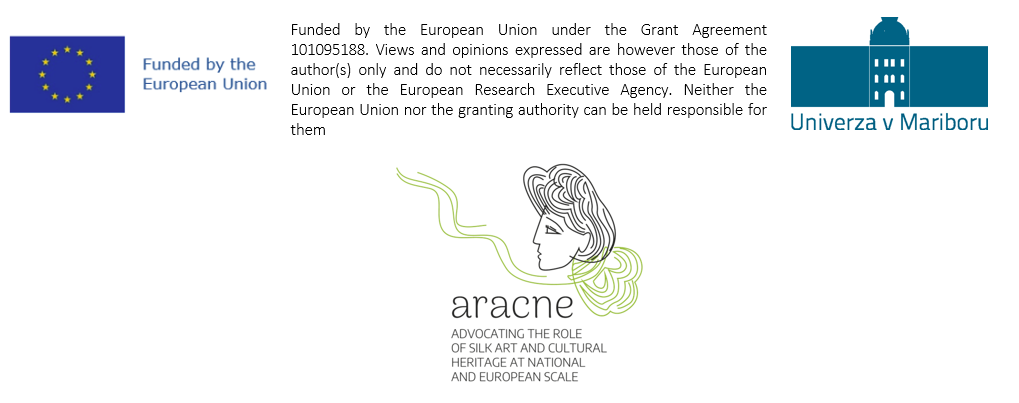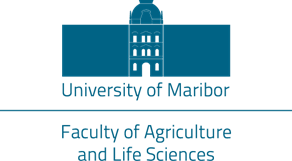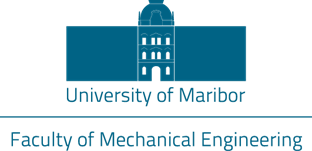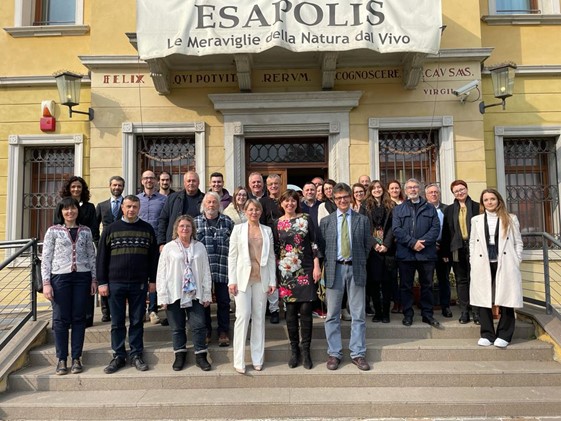
Project code: HORIZON-CL2-2022-HERITAGE-01
Project duration: 1.3 2023 – 1.3.2026
Project leader: dr. Silvia Cappellozza, CREA Agriculture and Environment (Consiglio per la Ricerca in Agricoltura e l’Analisi dell’Economia Agraria), Italy
Slovenian partner: University of Maribor, dr. Andreja Urbanek Krajnc
Under the auspices of the University of Maribor, 3 faculties are interdisciplinarily involved in the project:

Faculty of Agriculture and Life Sciences
Andreja Urbanek Krajnc: andreja.urbanek@um.si
Špela Jelen: spela.jelen3@um.si
Martin Kozmos: martin.kozmos@um.si
The Faculty of Agriculture and Life Sciences is involved in mulberry research which focuses on the identification of the old mulberry tree varieties scattered in various germplasm collections in different European countries. Sampling of historical local mulberry trees in the sericultural regions of the participating partners and the genetic analysis of their relationships will be the main tasks in order to trace the antique itinerary of the mulberry from Asia to Western Europe. Old local mulberry varieties that have proven superior in terms of morphological and genetic parameters will be propagated to make them available to local communities. The research aims to reintroduce mulberries into the cultivated landscape by raising awareness that mulberry trees provide ecosystem services as they have significant ecological benefits.


Faculty of Mechanical Engineering
Manja Kurečič: manja.kurecic@um.si
Sonja Šterman: sonja.sterman@um.si
Andreja Rudolf: andreja.rudolf@um.si
The Institute of Textile Materials and Design, Faculty of Mechanical Engineering, University of Maribor is involved in the ARACNE project in terms of technological innovations from mulberry and silk cocoon remnants, electrospinning, nanoparticles, reconstruction of old patterns of silk artefacts. In this context, we will be dealing with the silk-society-history relationship and the innovative design of different silk products.

Faculty of Electrical Engineering, Informatics and Computer Science
Institute of Automation
Silvo Hribernik
The Institute of Automation collaborates tightly with the Institute of Textile Materials and Design in terms of technological innovations from mulberry and silk cocoon remnants, electrospinning, nanoparticles.
Institute of Media, Communication and Visual Communication
Katja Udir Mišič
The Institute of Media Communications, Faculty of Electrical Engineering and Computer Science University of Maribor is involved in ARACNE project as support within narrative research of silk production heritage and history of sericulture in Europe in which a visual catalogue will be created. The Institute of Media Communications (FERI) will be also participating in the production of a short video with educational and cultural aims to enhance the renaissance of the European silk-related industrial, cultural and tourism sectors and in designing virtual exhibition within Co-creation of innovative solutions for silk design and fashion where “virtual showcases” will be shown to potential buyers and other fashion and art stakeholders.
List of participating partners:
- CREA – Agriculture and Environment (Consiglio per la Ricerca in Agricoltura e l’Analisi dell’Economia Agraria), Italy https://www.crea.gov.it/
- Iniziativa Cube, Italy (INI) https://www.iniziativa.cc/en/
- State Silk museum of Tbilisi, Georgia (SSM) https://museu.ms/museum/details/16726/tbilisi-state-silk-museum
- Scientific Center on Sericulture, Bulgaria (SCS) https://ses-vratza.bacsa-silk.org/
- Cultural Foundation of Piraeus Bank Group, Greece (PIOP) https://www.piop.gr/en.aspx#
- University of Maribor, Slovenia (UM) https://www.um.si/en/home-page/
- National and Kapodistrian University of Athens, Greece (NKUA) https://en.uoa.gr/
- Murcia Institute for Agriculture Research and Development, Instituto Murciano de Investigación y Desarrollo Agrario y Alimentario, Spain (IMIDA) https://www.imida.com/home
- D’orica Benefit Corporation, Italy https://dorica.com/en/
- Association Chemin de la Soie des Cévennes aux Alpujarras (ASSOIE) France
- Sericyne (SER), France https://www.sericyne.fr/en/about-us/
- University of Padua, Università degli Studi Di Padova (UNIPD) (Associated partner), Italy https://www.unipd.it/
- Council of Europe office in Venice (CoE) Associated partner, France https://www.coe.int/en/web/venice/home
- Art of Silk Museum Soufli (ASMS) (Associated partner), Greece https://www.silkmuseum.gr/

ARACNE project partners with coordinator dr. Silvio Cappellozza, CREA-Agriculture and Environment in front of the museum Esapolis in Padua.
Abstract:
The ARACNE project focuses on the cultural heritage of European silk production and its preservation, protection and valorisation. It aims to revitalise traditional skills through the locally adapted reuse of a common cultural and artistic heritage in order to create a European cultural identity linked to silk. Silk is the literal and metaphorical thread that has woven European culture, having contributed greatly to the development of the European economy and the arts. The production and past and present development of the silk sector can once again be the common basis for a future European Silk Route, which is intended to represent a cultural route across Europe. The project aims to create a broad and well-connected network, starting with the historical route followed by Marco Polo on his travels to the East.
The project aims to:
– Bring silk production back into fashion by reconstructing a resilient and innovative silk ecosystem that will follow the European countries concerned and promote traditions, architecture and tangible and intangible heritage. The consolidation of the European Silk Route will encourage links and joint activities between European cities and regions, in particular between museums, study and research centres, in order to strengthen the preservation and protection of their culture and to promote innovation in production and trade;
– contribute to improving the skills and competitiveness of Europe’s silk-related cultural and creative industries through the renewal, co-development and implementation of people-centred and place-specific silk-based cultural products, processes and service innovations, using digital applications and state-of-the-art technologies, in order to stimulate the transition to more sustainable business models, to encourage economic and social growth and to strengthen the image of European countries abroad. The project will also meet the macro objectives of the European Green Deal and the New European Bauhaus.
Work tasks of University of Maribor:
Recreation of European mulberry heritage (Lead: UM. Other partners involved: CREA, NKUA, IMIDA, SCS, SSM) (M1-M12).
Description: Identification of the old mulberry tree varieties scattered in various germplasm collections in different European countries, sampling of historical local mulberry trees in sericulture regions of the participating partners and genetic analysis of their relationships to trace the antique itinerary of the plant from Asia to Western Europe. Recreation of mulberry preservation sites for each country, or enrichment of the existing ones, with the aim of having genetic material available for further sericulture development. Recreation of samples of distinctive landscapes.
Narrative research of silk production heritage and history of sericulture in Europe (Lead: UM. Other partners involved: All) (M1-M35).
Describtion: This activity will be carried out throughout the duration of the project: more intense during the first twelve months; update activity is expected at M24 and M35. This task will be implemented with the support of many European and East Neighbouring countries museums to valorise the wealth of historical tools and instruments for silk production, preserved and valued as common heritage and inspiring technological innovation for silk manufacturing. Niche silk industries and SMEs (DOR, SER) will be core testimonials for the silk heritage storytelling under this task.
Co-creation of innovative solutions for silk design and fashion (Lead UM. Other partners involved: SER, DOR, INI, Ass. Part. ASMS) (M6-M30)
Different design and fashion-based solutions will be co-created leveraging on silk innovation techniques and digital technologies. UM will work on the relationship between silk-society-history and innovative design, analysing the use of silk in the arts: painting, fashion and design, graphics and decoration, through studies on sustainable fashion and silk design for social inclusion and collaboration with cooperatives of abused women. UM will make research on the development of the silk industry from the period of the Austro-Hungarian monarchy (Archduke John’s age) and until the social Yugoslav revolution that made Maribor become a large textile centre known as “Yugoslav Manchester ”. Inventarisation of the Museums’ silk exhibits in Slovenia, in particular collars and accessories, inspired by the clothes of Anna Plochl and Archduke John will be performed and used as inspiration for 3D clothing reconstruction, new accessories and modern patterns for digital printing. The in-depth study of this historical material will bring both structural and aesthetic innovation to the world of silk. SER will create innovative forms and products through natural and non-woven silk manufacturing and advanced techniques. SER’s products will combine a new patented way of obtaining a bio-symbiotic silk spinning by the silkworms (avoiding the final killing of pupae occurring for the usual silk reeling), with the design of objects that can constitute trendy biodegradable home furnishing (lamps), or fashionable and luxury jewels (built in collaboration with DOR). DOR will produce place-based “zero km” silk through a recovered and restored silk reeling machinery, stressing sustainable and ethical silk production. The associated partner ASMS will produce new silk accessories from waste silk clothes through a new methodology and innovative design to recycle them under the circular economy paradigm. UM will support all these creations with the design of virtual exhibitions to show them in “virtual showcases” to potential buyers and other fashion and art stakeholders.
Implementation of cutting-edge technologies for silk-based applications in CCIs (Lead: UM. other partner: IMIDA) (M6-M30)
This task will be dedicated to the implementation of new technological solutions which will be made available for the CCIs, in terms of future exploration of fashion trends for material development, in particular circular economy and recycling as well as expansion of the traditional usage of silk products in general. Design, development and fabrication of new materials from silk and silk processing waste will be carried out using several advanced production techniques, such as electro-spinning and 3D printing, which will transform fibroin and sericin (silk components) solutions into bulk structured materials, i.e. nano-fibrous webs and 3D objects, respectively. Special emphasis will be placed on usage over fibroin filaments and sericin (‘’seri-waste’’), which will be either dissolved or processed into sub-micron particles via spray-drying technique and used to prepare spinning solutions and printing formulations, conforming to the green chemistry paradigm (e.g. green solvents). Pertaining to the circular economy concept, we will employ natural plant-based molecules to develop functional particles and coatings, that will confer such new or enhanced properties to silkbased products as UV shielding or dyes; here, mulberry tree components, most notably lignin and tannic acid, will be employed. Such treatments will tackle enhancement of silk’s performance, i.e. UV resistance and thus ensure its longer usage, also for outdoor applications. (D2.5). Developed and manufactured silk-based materials (fibrous non-woven and 3D objects) will be considered as novel constituents in creative endeavours, ranging from fashion to product design, as well as assessed for further applications in the biomedical and technical sectors.
Set up of a gene bank of local mulberry’s variety and one local strain rearing for local communities to stimulate local silk production for CCIs
(Lead part: CREA; other involved partners: UM, NKUA, IMIDA, SCS, ASSOIE) (M12-M36) Mulberry silk varieties evaluated as locally relevant based on the genetic analysis performed in WP1 will be reproduced and planted in germplasm collection located in the research Institutes (CREA, UM, NKUA, IMIDA, SCS). In case varieties from other participating countries (France and Georgia) will be identified as locally relevant, ASSOIE and SSM will contact academic partners in their countries to make possible their preservation; in any case, relevant varieties of these countries will be preserved at CREA and UM, to make them available to French and Georgian communities, as back-up sources. The same will be done for the silkworm local accessions selected for each participating country; where the opportunity to maintain them locally will not be concrete, CREA and SCS will work as back up sources for those communities. The idea is to create a basis for the development of the European Silk Route by also recreating local biodiversity for the benefit of silk CCIs that should take profit of local production.
